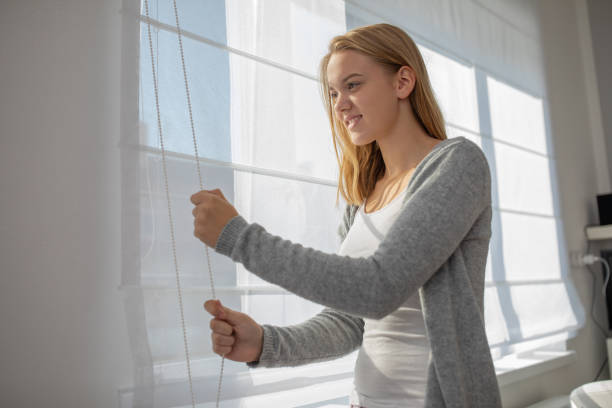Amere scrim of fabric can transform an entire room–bringing a pleasing glow to the interior and creating a bridge to the natural world outside. Writer Laura Ingalls Wilder knew this well, having lived in deprivation and dirt dugouts. She knew a serious decor upgrade when she saw one: “The house was beautiful when Ma finished,” she wrote in her 1937 novel, On the Banks of Plum Creek. “The pure-white curtains were looped back on each side of the clear glass windows. Between those pink-edged, snowy curtains the sunshine streamed in.” Today, the metaphors may vary among designers–“the red lipstick,” “the jewelry,” “the cherry on the sundae”–but the takeaway remains the same: Window treatments always complete the look of a room.
“At a minimum, they should always be functional and beautiful,” says ELLE DECOR A-List Titan Sheila Bridges. Beyond that, window treatments provide “another unique opportunity to express your own sense of personal style.” Generally, the fabric should play off the dominant colors and textures as well as the overall vibe of the room.
Lately, trends have taken a turn toward stripes, florals, and Jaipur-inspired patterns, as well as muted shades (think pale pink). And the tailoring is streamlined, says Lee Cavanaugh of ELLE DECOR A-List Titan firm Cullman & Kravis. “We’ve simplified all our window treatments in the past decade to be straight panels and flat Roman shades,” she says.
This doesn’t necessarily mean unadorned, however. Davina Ogilvie, the founder of Wovn Home, a custom window treatment company, notes that “we’ve seen more interest in adding trim like ribbon or pom-poms or rickrack–all these fun little elements that even five years ago would have seemed kind of grandma.” That said, some styles are correctly not budging from the Wayback machine: “Balloon shades, swags, and jabots draped with cording and tassels,” Cavanaugh says. “I could go on, and most of the young people in our office have no idea what I’m talking about.”
The best treatments honor the idea that windows are the original lamps of your home. “Views and natural light are critical to designing a space with a strong indoor-outdoor connection, which is being increasingly prioritized,” says Christine Marvin, chief marketing and experience officer at Marvin Windows. “Expansive amounts of glass let the window speak for itself.” Designers back her up on this, too: In a room with an entire elevation of windows or a brownstone where the back wall has been blown out and replaced with floor-to-ceiling glass, “you may not want to fuss it up with hundreds of yards of fabric,” Cavanaugh says. Instead, trimmer solar blinds or Roman shades may do the trick.
If you want sunlight but also crave some measure of privacy, go with a cafe curtain–another granny-core element for which Ogilvie has seen an uptick in demand. “You might remember them from your grandma’s kitchen window, in a ditsy print,” she says. “But now people want them in white linen, with streamlined pleats. It’s a modern take that’s cute but also ethereal.”
A streamlined look can still be layered–with sheers or Roman shades behind curtains, says Adam Skalman of the Shade Store, maybe even with an understated valance (but nothing, too. I Love the ’80s). A dimensional approach like this can be both decorative and climate-friendly since window treatments can keep rooms cooler in the summer and warmer in the winter, especially if you opt for lined curtains. Cavanaugh points out that the treatments should generally stay consistent throughout the house, except in the bedroom, where blackout lining may be preferred. Keep these functionality benefits in mind as you’re staring down the (potentially jaw-dropping) estimate. “Window treatments are so often the last line item in the budget, and people can be like, ‘I think I can live without,'” Ogilvie says. “But then they do it, and it’s like, ‘Oh, my God, this is the finishing thing.’ “

